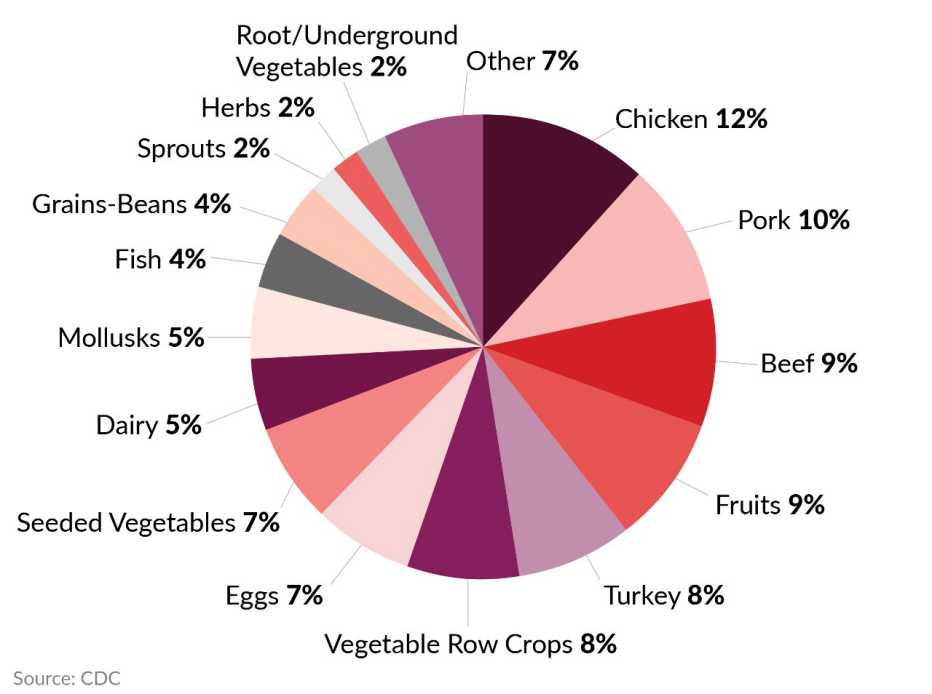Staying Fit


Even though we may have enjoyed the same foods throughout our lives, our bodies become more susceptible to food-related risks as we age. Once we hit 65, it’s even more important to pay attention to food safety because the likelihood of experiencing severe food poisoning increases, the U.S. Centers for Disease Control and Prevention (CDC) warns.
"Older adults in general are more likely to have severe illness [from food poisoning] that could land them in the hospital,” says Patricia Griffin, M.D., chief of the CDC's Enteric Diseases Epidemiology branch, which tracks foodborne illnesses. Nearly half of people 65 and older with a confirmed foodborne illness caused by salmonella, campylobacter, listeria or E. coli end up hospitalized, according to the CDC.


AARP Membership— $12 for your first year when you sign up for Automatic Renewal
Get instant access to members-only products and hundreds of discounts, a free second membership, and a subscription to AARP the Magazine.
Top foods that caused illnesses 2009-2018
"Many older adults are quite healthy and don't think of themselves as having increased risk,” she says. “But they should recognize that as we all age, our immune system becomes a little more sluggish, and we need to take more precautions to prevent ourselves from getting sick."


A top precaution from the CDC is to cook food until it reaches its safe internal temperature, to kill any harmful bacteria, viruses or parasites that may be present. Other safety measures include washing your hands with soap and water for 20 seconds before preparing food, rinsing fresh produce under running water before eating it and avoiding cross-contamination in the kitchen — in particular, raw meat, poultry, seafood and eggs — when preparing meals.
Here are seven types of foods that the CDC warns can cause intestinal illness, along with the most common disease-causing germs associated with each and safety tips to avoid them.
1. Chicken, beef, pork and turkey
Undercooking and cross-contamination are the two biggest risks posed by meats. Wash your hands; keep raw meat away from other ingredients; and cook chicken, beef, pork and turkey to safe temperatures. The CDC recommends using a cooking thermometer, though Griffin acknowledges that not everyone has one or uses it regularly.


Safe Minimum Cooking Temperatures
- Ground beef, pork, veal, lamb: 160 degrees
- Ground chicken, turkey: 165 degrees
- Steaks, roasts, chops: 145 degrees
- Poultry: 165 degrees
- Fresh pork, ham: 145 degrees
- Precooked ham: 165 degrees
- Egg dishes: 160 degrees
- Leftovers, casseroles: 165 degrees
- Fish with fins: 145 degrees
Source: Foodsafety.gov
Deli meats: Deli products may be contaminated with listeria, a bacteria that can spread quickly on equipment, surfaces, hands and the food itself. Simply tossing deli meats in the refrigerator won’t stop listeria from growing. The best way to make sure your deli meats, hot dogs and sausages are safe to eat is by heating them to 165°F, or until they are steaming hot.
Pâté and meat spreads: Reach for shelf-stable meat spreads that have been treated with heat to kill any germs, making them a safer alternative to eat.
Common foodborne germs: Campylobacter, Clostridium perfringens, E. coli, listeria, salmonella, Yersinia
Safety tips: Ignore recipes that advise rinsing raw meats with water. The practice doesn't make your food any safer, and splashed water can spread germs from the raw meat to other food, utensils and surfaces. Always make sure your meat is sufficiently cooked. Older adults who prefer the taste of rare beef or pork are taking a risk, Griffin says. Leftovers should be refrigerated at 40 degrees or colder within two hours of preparation. Large cuts of meat should be portioned into small quantities to cool fast enough and prevent bacteria from growing.
2. Fruits and vegetables
Produce can pick up germs anywhere along the way, from the farm where it was grown to the store where it was sold — even from your kitchen counter once you get it home. Proper washing is the key to safety.
"On a per-serving basis, raw vegetables are not horribly risky except for certain ones, like sprouts,” Griffin says. “Vegetables and fruit are a really important part of a healthy diet, and there are so many wonderful ways to cook vegetables, and they are delicious."
Melons: A higher risk of listeria contamination exists in melons than in most fruits. Their low acidity allows them to be stored in the refrigerator for an extended period, creating an ideal environment for listeria to thrive.





































































More on Health
Frozen Vegetables Recalled from Kroger, Food Lion, Safeway
Products may be contaminated with listeria
How Much Do You Really Know About Food Poisoning?
Learn why older adults are at greater risk of foodborne illness and more in this challenging true-or-false quiz
Power Outage? Here’s How Long Food Lasts in the Fridge and Freezer
8 expert tips to avoid getting sick from spoiled food when the lights go out